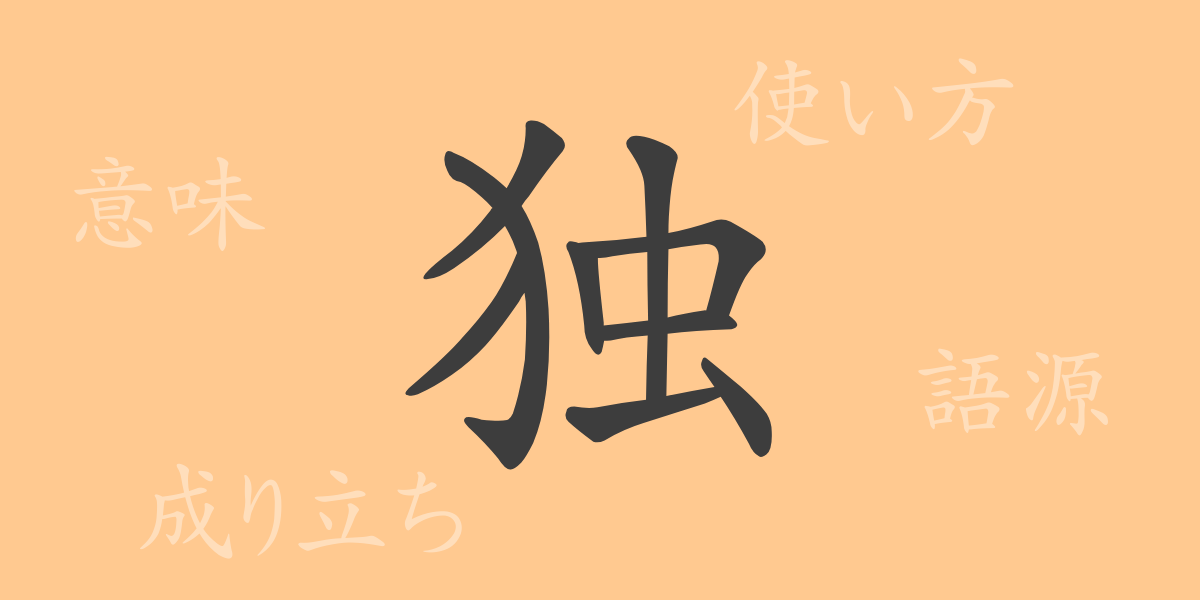The richness of the Japanese language is partly due to the deep meanings and history of its kanji characters. ‘独 (どく)’, a commonly used kanji in Japan, serves as a key to understanding Japanese culture with its form and sound weaving significant meanings. This article delves into the allure of ‘独’, exploring its origins and contemporary usage.
Origins of ‘独 (どく)’
The kanji ‘独’ originated from ancient China, combining ‘犬’ (dog) and ‘虫’ (bug), originally representing a lone dog. This imagery evolved to mean ‘alone’ or ‘solo,’ reflecting the solitary nature of wild wolves, which were symbols of independence and self-reliance.
Meaning and Usage of ‘独 (どく)’
‘独’ primarily means ‘alone’ or ‘separated from others’, used specifically in contexts like ‘単独 (たんどく)’, ‘独立 (どくりつ)’, and ‘独自 (どくじ)’. In certain contexts, it can also mean ‘uniquely unparalleled’, emphasizing the uniqueness of something unparalleled and exceptional.
Reading, Stroke Count, and Radical of ‘独 (どく)’
The kanji ‘独’ has multiple readings, which vary depending on its use.
- Reading: On’yomi ‘ドク’, Kun’yomi ‘ひと.り’
- Stroke Count: 9 strokes
- Radical: 犬 (けものへん)
Phrases, Idioms, and Proverbs Using ‘独 (どく)’
‘独’ is featured in numerous idioms and proverbs that enrich the Japanese language. For instance, ‘独学 (どくがく)’ refers to self-study without formal schooling, ‘独立 (どくりつ)’ signifies independence from external control, and ‘独創的 (どくそうてき)’ describes something innovative or unique. These expressions highlight the importance of individuality and the power of self-achievement.
Conclusion on ‘独 (どく)’
The kanji ‘独’ encapsulates concepts of solitude, independence, and uniqueness. From its ancient origins to its modern applications, ‘独’ plays a vital role in the Japanese language, offering insights not only into linguistic comprehension but also into personal attitudes and lifestyles. Understanding the depth of ‘独’ enriches both our grasp of Japanese and our perspectives on life’s individual paths.

























